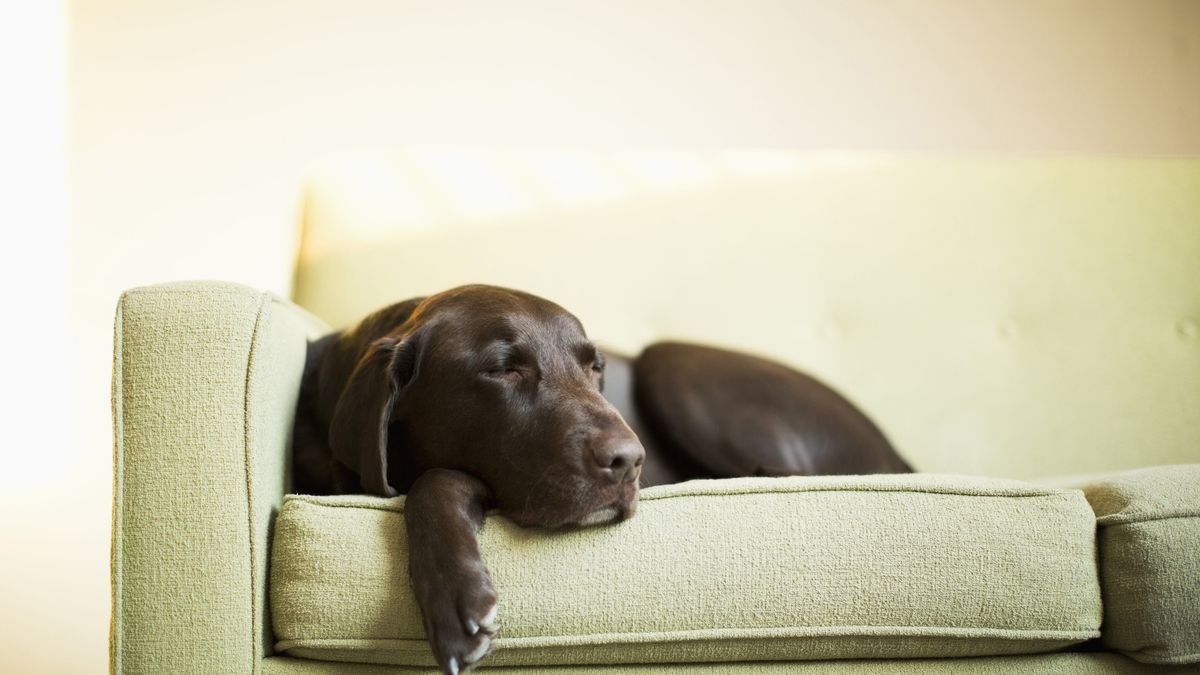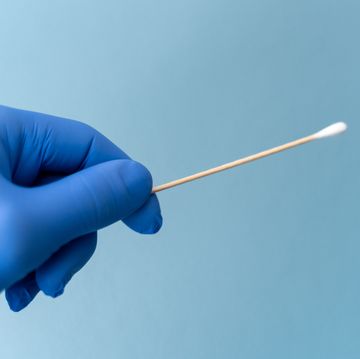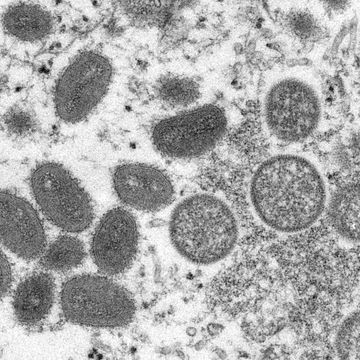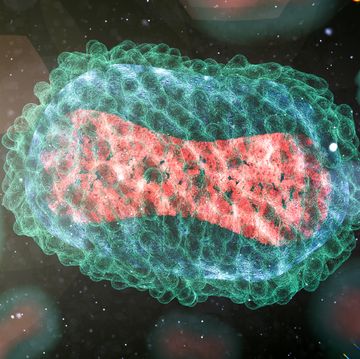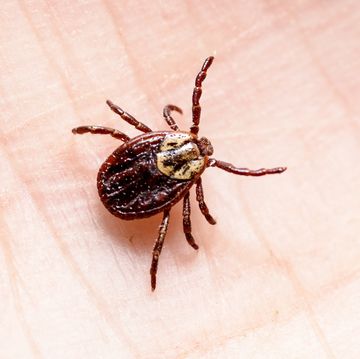Monkeypox cases have been jumping up in the U.S. and across the world. And now, it’s infected pets. A new case report details the story of a dog with monkeypox—the first confirmed case of human-to-pet infection—and how it all came to be.
According to the report, which was published in The Lancet, the dog belongs to a non-monogamous French couple who contracted monkeypox after having sexual contact with other people. Nearly two weeks after being diagnosed, the couple noticed their Italian greyhound had developed characteristic monkeypox pustules on its stomach.
The dog was given a PCR test, which confirmed that it did, in fact, have monkeypox. The men noted that their dog had slept in their bed, and they had been careful to keep it from having contact with other pets or people from the start of their symptoms, which happened 13 days before their dog developed the pustules.
“Our findings should prompt debate on the need to isolate pets from monkeypox virus-positive individuals,” the researchers wrote. “We call for further investigation on secondary transmissions via pets.”
The news raises a lot of questions about monkeypox in dogs, and how monkeypox spreads, along with how to keep your pets safe if you live in an area where monkeypox is spreading. Here’s what you need to know.
Can dogs get monkeypox?
Yes, dogs can get monkeypox. Monkeypox is endemic—meaning, it’s constantly around at some level—in central and west Africa, but it’s not common for it to be seen in so many different areas of the world at once. The spread of monkeypox in the U.S., Europe, and other parts of the world is new and, with that, there’s a lot experts are still learning.
The Centers for Disease Control and Prevention (CDC) says online that officials are “still learning” which animals are vulnerable to getting infected with monkeypox. However, the agency says, “we should assume any mammal can be infected with Monkeypox virus.”
Worth noting: While the CDC says that dogs can be infected with monkeypox and other orthopoxviruses, it also says that it’s “unknown” if cats can be infected.
How worried should you be about monkeypox in dogs?
Not very. “At the moment, the risk is relatively low,” says Colin Parrish, Ph.D., a John M. Olin professor of virology at the Cornell University College of Veterinary Medicine. “Monkeypox requires close, relatively prolonged contact and people usually have that with their dogs,” he says.
“There are how many millions of dogs in the world and this is the first reported case,” Dr. Parrish continues. “It doesn't seem like dogs are particularly at risk or if they do become infected are not going to add an extra layer of transmission.”
That said, “we should be diligent in limiting the potential for human-to-dog transmission,” says Michael Oglesbee, D.V.M., Ph.D., professor and director of The Ohio State University Infectious Diseases Institute.
How monkeypox spreads
People usually get monkeypox when they come into contact with the virus from an animal, a person, or materials contaminated with the virus, according to the CDC. The virus can enter the body through broken skin or the eyes, nose, or mouth.
It’s possible to get monkeypox after being bitten or scratched by an infected animal, the CDC says, but the main way the virus seems to be spreading during this outbreak is from having direct or indirect contact with body fluids or lesions from infected people.
The CDC also points out that monkeypox has been spread through fomites, which are objects, surfaces, or materials that can carry infectious particles. That can include bedsheets, which could hold the monkeypox virus for up to 15 days.
The CDC says it’s possible that infected people can spread monkeypox to pets through close contact like petting, cuddling, hugging, kissing, licking, sharing sleeping areas, and sharing food.
Still, “it is likely that human-to-dog transmission is less efficient than human-to-human, considering that the haired skin of a dog would preclude most direct contact transmission,” says Dr. Oglesbee.
Symptoms of monkeypox in dogs
There are a few signs that your dog may have developed monkeypox, according to the American Kennel Club (AKC). Those include:
- Lymph node enlargement
- Lethargy
- Crusty nasal discharge
- Vesicular (blister-like) skin legions
- Nasal and eye secretions
- Coughing
- Bloating
- Rash
“The lesions in dogs are similar to those in humans,” Dr. Oglesbee says.
If your dog has two or more symptoms, along with a rash, or has close contact with someone who has a probable or confirmed case of monkeypox, the AKC recommends getting them tested.
Dr. Parrish points out, though, that monkeypox seems to be a “mild” disease in dogs. “The main thing is being supportive, keeping the dog away from other people—particularly children—and they'll recover naturally,” he says.
How to keep pets safe from monkeypox
The CDC recommends that people infected with monkeypox avoid close contact with pets. If the infected person did not have close contact with the pet, the CDC suggests having someone else care for the pet until the person recovers.
But, if close contact happened, it’s important to keep the pet home and away from other people and animals for 21 days after the most recent contact, the CDC says.
If you have monkeypox, the CDC recommends washing your hands well or using an alcohol-based hand rub before and after caring for your pet. It’s also important to cover your skin rash with clothing or bandages and wear gloves and a well-fitting mask while caring for your pet.
It’s also crucial to keep your pet away from contaminated items in your home, like clothes, sheets, and towels. You’ll want to make sure food, toys, and bedding that your dog uses don’t come into direct contact with your skin or uncovered rash, the CDC says.
If possible, though, “if you have monkeypox, you should avoid contact with your dog or other pets until you are no longer contagious,” says infectious disease expert Amesh A. Adalja, M.D., a senior scholar at the Johns Hopkins Center for Health Security.
At the same time, though, Dr. Adalja says you shouldn’t worry about contacting monkeypox from a random dog on the street. The American Veterinary Medical Association (AMVA) echoes that, noting that “people can catch monkeypox from animals, but the chance of this happening in the United States is currently low.” The AVMA also says that people have a higher chance of catching monkeypox from another person than they do an animal.
If your dog or other pet is showing symptoms of monkeypox, contact your veterinarian. They should be able to guide you on next steps.
This article is accurate as of press time. However, some of the information may have changed since it was last updated. While we aim to keep all of our stories up to date, please visit online resources provided by the CDC and WHO to stay informed on the latest news. Always talk to your doctor for professional medical advice.
